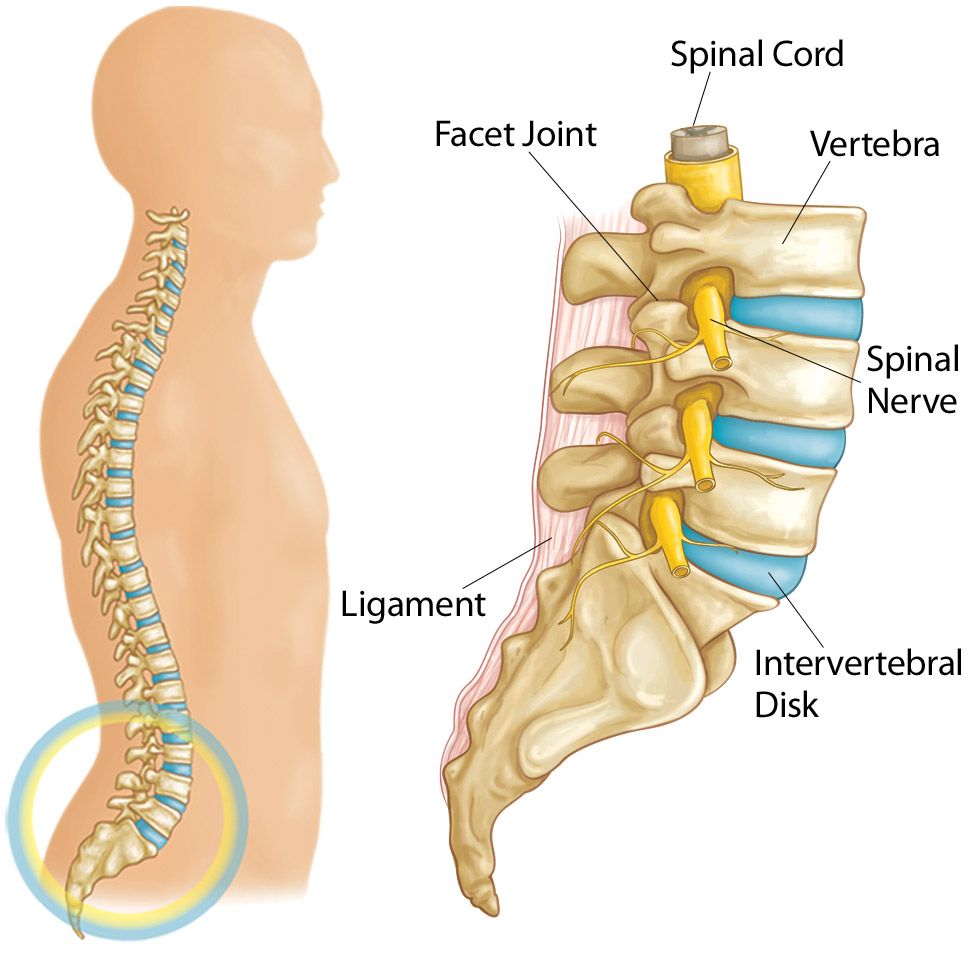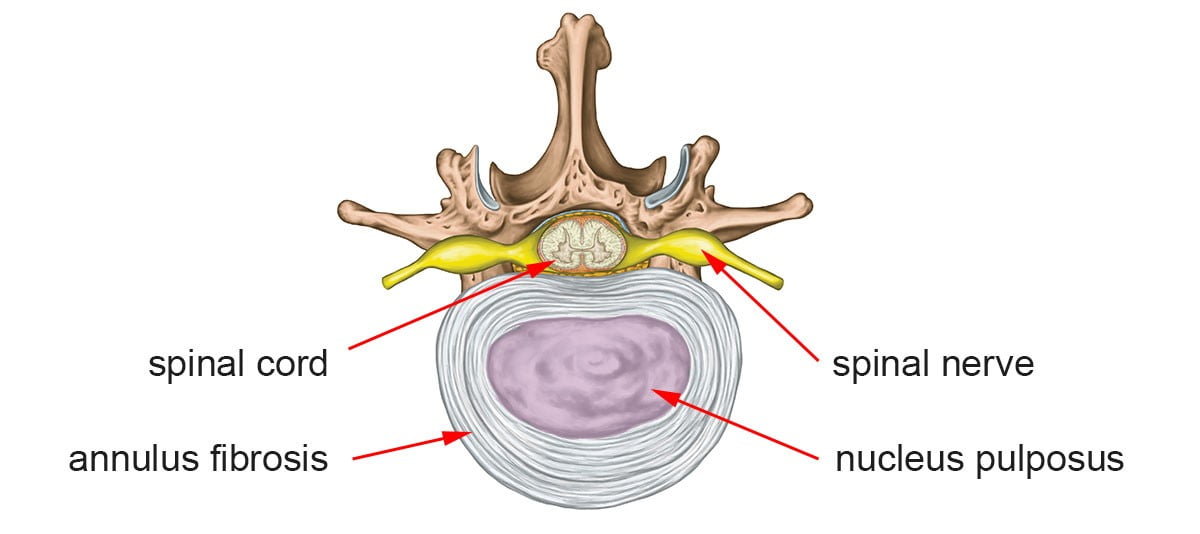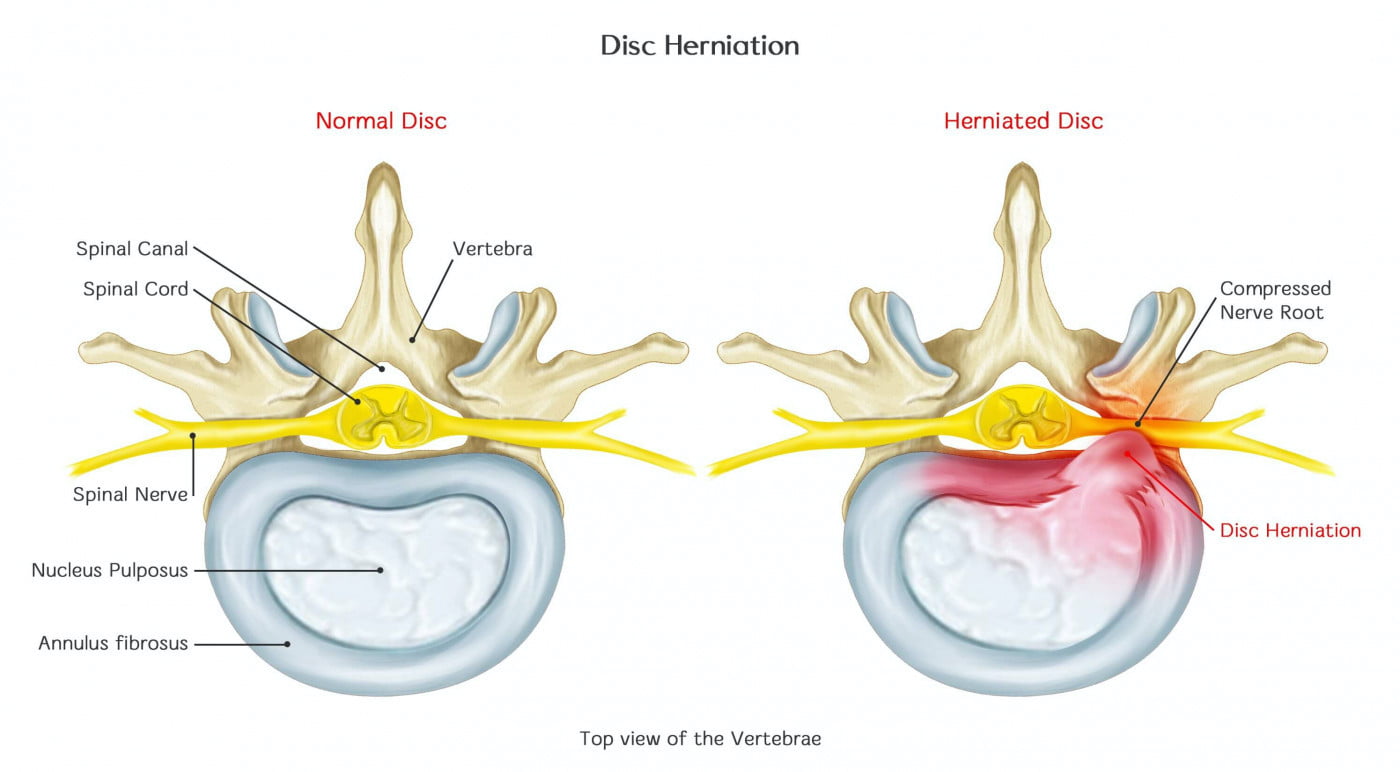Is your back pain giving you a major trouble? If the pain continues you must check with your doctor. Every body part being important one, the back pains can lead to some major disease if ignored. In-vertebral Disc Prolapse or slipped disc is a second most common reason for a doctor’s visit. Money is spent like a water just to find out the exact disability. Over a period if a person is not able to solve the back problem, it is always suggested to rest the case in the expert’s hand.


Let’s understand the slipped disc, its causes and treatment.
The vertebral column (also called the spinal column or backbone) is made up of 33 bones known as vertebra (plural, vertebrae). Each vertebra is separated from the adjacent vertebrae by intervertebral discs, a spongy but strong connective tissue. The intervertebral discs, along with ligaments and facet joints, connect the individual vertebrae to help maintain the spine’s normal alignment and curvature while also permitting movement.
The above image shows the entire spinal column from beside and from the front. The bones of the spinal column are orange in colour, and the intervertebral discs are white.
In the center of the spinal column there is an open channel called the spinal canal. The spinal cord and spinal nerves are located in the spinal canal, where they are surrounded by spinal fluid and protected by the strong spinal column. On each side of the spine, small openings between adjacent vertebrae called foramina (singular, foramen) allow nerve roots to enter and exit the spinal canal.


When we face the back problem?
While the discs in the lower (lumbar) region of the spine are most often affected in intervertebral disc disease, any part of the spine can have disc degeneration. Depending on the location of the affected disc or discs, intervertebral disc disease can cause periodic or chronic pain in the back or neck. Pain is often worse when sitting, bending, twisting, or lifting objects.
A herniated disk is a condition that can occur anywhere along the spine, but most often occurs in the lower back. It is sometimes called a bulging, protruding, or ruptured disk. It is one of the most common causes of lower back pain, as well as leg pain or “sciatica.”
CAUSES:


A herniated disk is most often the result of natural, age-related wear and tear on the spine. This process is called disk degeneration. In children and young adults, disks have high water content. As people age, the water content in the disks decreases and the disks become less flexible. The disks begin to shrink and the spaces between the vertebrae get narrower. This normal aging process makes the disks more prone to herniation.
A traumatic event, such as a fall, can also cause a herniated disk.
Disc herniations can occur in young, healthy people as a result of an injury or tear to the outer layer of the disc (called the annulus fibrosis) that allows the central, jelly-like portion of the disc (called the nucleus pulposis) to herniate into the spinal canal or foramen.
DIAGNOSIS :
If a patient presents with symptoms associated with disc herniation, the doctor may order the following diagnostic procedures:
Computerized tomography (CT) scan – a series of X-rays, assembled by a computer into 3-dimensional images of the body’s structures
Magnetic resonance (MR) imaging – the best overall method of imaging the spinal cord, nerve roots, intervertebral discs, and ligaments.
Electromyography (EMG) – tests the electrical activity of a nerve root to help determine the cause of pain.
Myelography – a procedure that involves injecting a liquid dye into the spinal column followed by a series of X-rays and a computerized tomography (CT) scan. This procedure may provide useful images that reveal indentations of the spinal fluid sac caused by bulging or herniated discs, or bone spurs that might be pressing on the spinal cord or nerves.
Since a herniated disc may cause similar symptoms to other degenerative spinal conditions, a surgeon may order a variety of diagnostic procedures to rule out other possible conditions.
TREATMENT:
Before opting for the surgery, doctor will always suggest some effective non-surgical treatments. These treatments can consist of weight balance, physical exercise, massage, ultra sound and medications.
If the pain has turned into a major chronic disease surgery is a must. This majorly depends on the situation, pain severity, history, time duration of pain. There can also be chances of some neurological damage.
As the treatment varies depending on patient’s condition, it is always suggested to show the back pain to your doctor. The early stage detection can be cured by non-surgical treatment. Getting an expert’s help will always make your diagnosis perfect.
